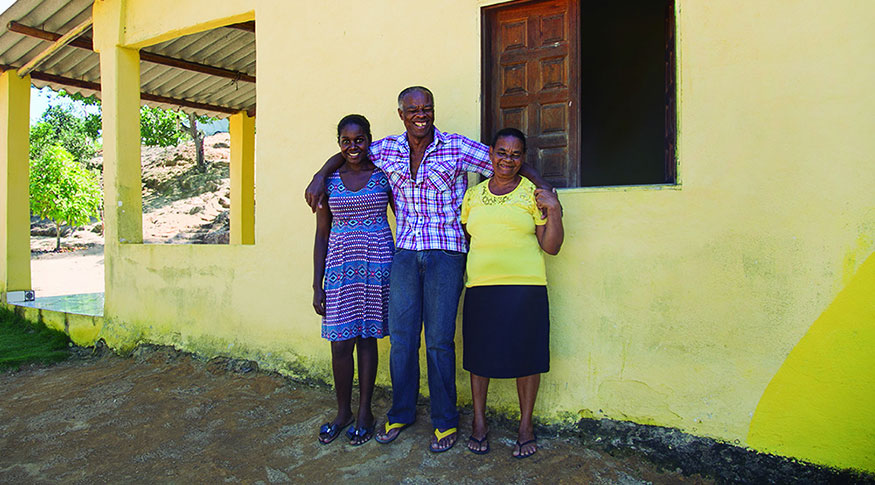Against Covid-19
IBGE experimental methodology gave support to immunization plan for traditional peoples
October 15, 2021 10h00 AM | Last Updated: October 18, 2021 07h29 PM
The IBGE released today (October 15) the report of the emergency dimensioning of the resident population in Indigenous and Quilombola areas urgently produced in 2020 and now available, with the explanation of the methodology used. As a result, the IBGE indicated an estimate of 1,108,970 resident persons in Indigenous areas and 1,133,106 resident pesons in Quilombola areas in Brazil.
The publication Emergency dimensioning of the resident population in Indigenous and Quilombola areas for actions to fight the pamdemic caused by the coronavirus was designed to meet the Ministry of Health’s demand, with the purpose of planning the immunization campaign of vulnerable groups. By means of a combination of data from the 2010 Cesus and the most recent version of the Census Mapping, which estmates the number of occupied households, the study condiered the already maaped areas in the planning of the next Census, to be carried out in 2022.
“Much of what was released was only possible because of the planning of the next census, with the mapping and the creation of a teritorial basis which includes the selfreport of the Quilombola communities. That is unprecedent”, says the IBGE analyst in charge of the project of Traditional Peoples and Communities, Ms. Marta Antunes.
That is why she emphasizes the experimental nature of the emergency estimate. “Only with the 2022 Census will it be possible to get to know the Quilombola population. What we did up to now was a very specific estimation methodology, for a specific moment, for a specific purpose. Those data cannot be used as population estimate for another purpose”, alerts the specialist.

A detail some may overlook - and which the report also clarifies - is that the emergency dimensioning does not bring the total of Indigenous or Quilombola populations, but the quantity of residents in the Indigenous or Quilombola areas. The study covers the enumeration areas of Indigenous Lands, Quilombola Territories, Indigenous and Quilombola Groups and other Indigenous and Quilombola localities not defined as enumeration areas, separated by municipalities and states.
The IBGE manager of Traditional Territories and Protected Areas, Mr. Fernando Damasco, emphasizes the importance of disclosing such data timely for the health secretariates and local managers. “The great advance that this estimate brings is to reveal population concentrations that the local public powers are usually unaware of. The city hall itself, in charge of the National Immunization Plan, is usually not aware of the presence of such communities.”
The results, as researchers point out, go beyond meeting a specific demand. “Even with limitations, giving visibility to the Quilombola population is something very important, going beyond the immunization plan”, comments Ms. Antunes regarding the special attention to vulnerable groups. Mr. Damasco adds that “the results indicate what the Population Census will reveal and, consequently, give a hint of what must be done to cover those populations in the next Census.”
Most population in Quilombola areas is in the Northeast Region
The estimate showed that, of the 1.13 million residents in Quilombola localities in Brazil, 698.1 thousand are in the Northeast Region, especially in the states of Bahia (268.6 thousand) and Maranhão (170.9 thousand), which together concentrate almost half of the Brazilian population in Quilombola areas. The Southeast and North Regions have, respectively, an estimate of 172.0 thousand and 154.9 thousand people. The South Region has 73.0 thousand, and the Central-West, 35.0 thousand.
Only the states of Acre and Roraima do not have this population dimensioned. “What we noticed is the presence of a population in a quilombola area in almost every state, and this shows that it is a very spread population. There are many municipalities in which this population is present”, comments Mr. Fernando Damasco.
Population in Indigenous areas is estimated at 560.4 thousand in the North Region
The states with the largest estimated population in Indigenous areas are Amazonas (284.5 thousand), Mato Grosso (145.3 thousand), Pará (105.3 thousand) and Roraima (83.8 thousand). Together, they account for 55.8% of the total number of residents in Indigenous areas. Pernambuco (80.3 thousand) and Mato Grosso do Sul (78.1 thousand) also showed a greater number of residents in Indigenous areas. Populations in other states do not exceed 50 thousand people. By regions, the North leads (560.4 thousand), followed by the Northeast (234.7 thousand), Central-West (224.2 thousand), South (59.9 thousand) and Southeast (29.8 thousand).
IBGE against Covid-19
The IBGE made available several survey results, which can be cross-compared and contribute to the fight against the pandemic caused by the new coronavirus. The hotsite gathers data, as well as information about partnerships with other public bodies, such as the Oswaldo Cruz Foundation (Fiocruz), and changes in the Institute's routines and projects during the period of social distancing.
On Indigenous and Quilombola populations, see also:
IBGE launches interactive dashboard to help municipalities fight the pandemic
Against Covid-19, IBGE anticipates data on Indigenous Peoples and Quilombolas


















